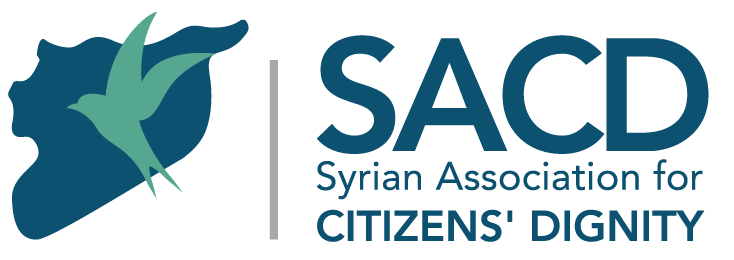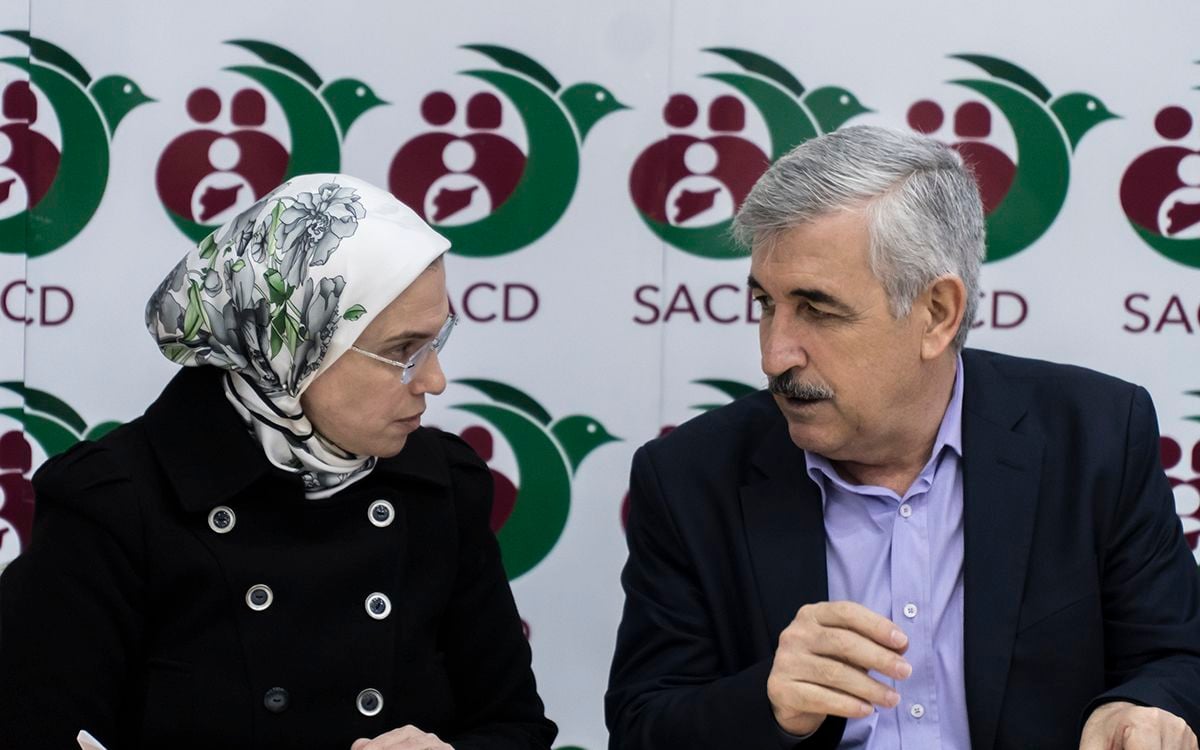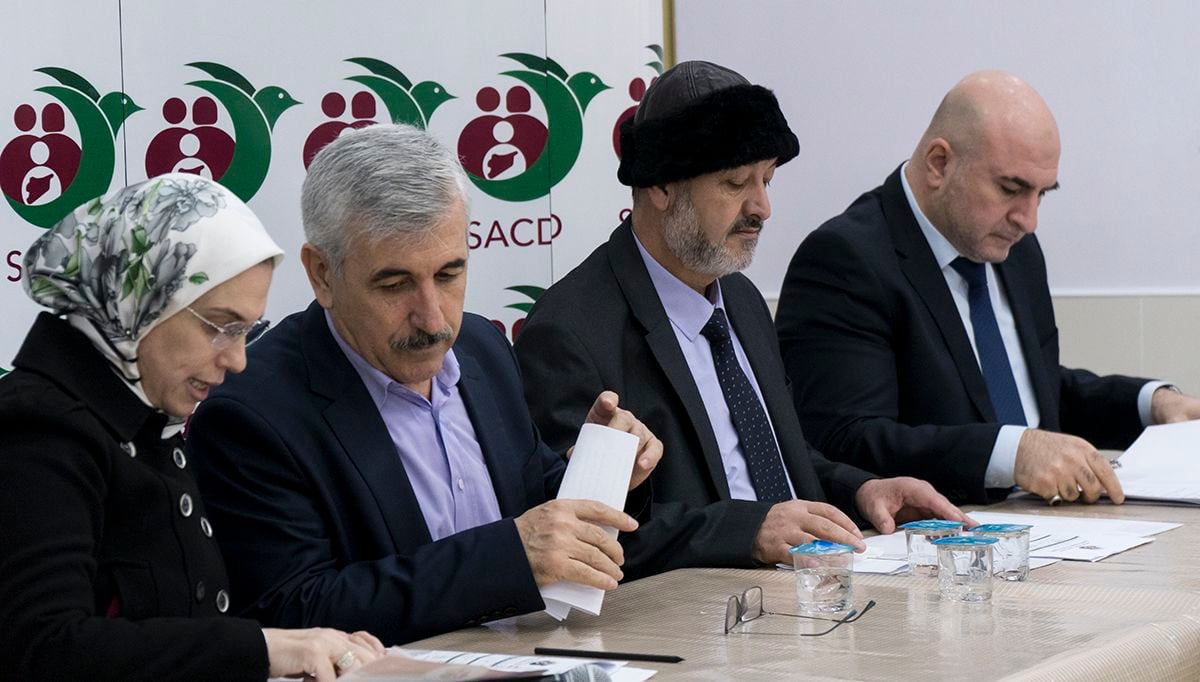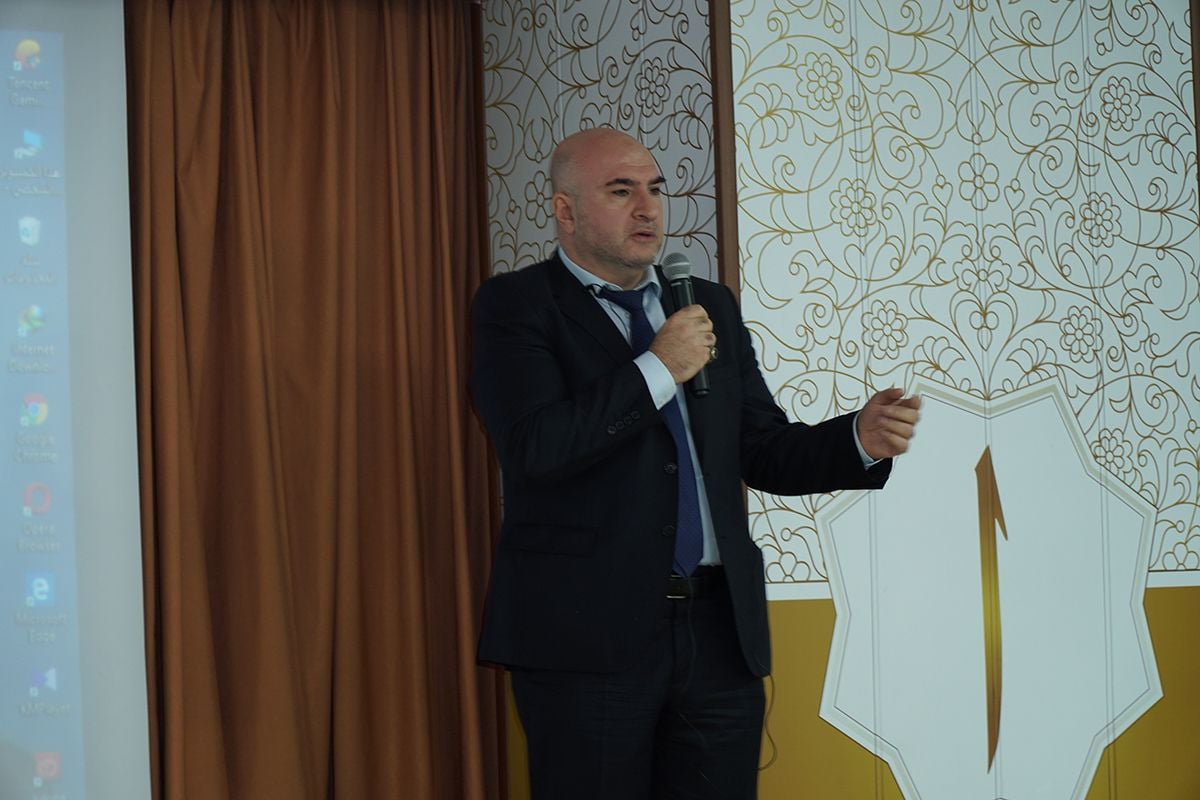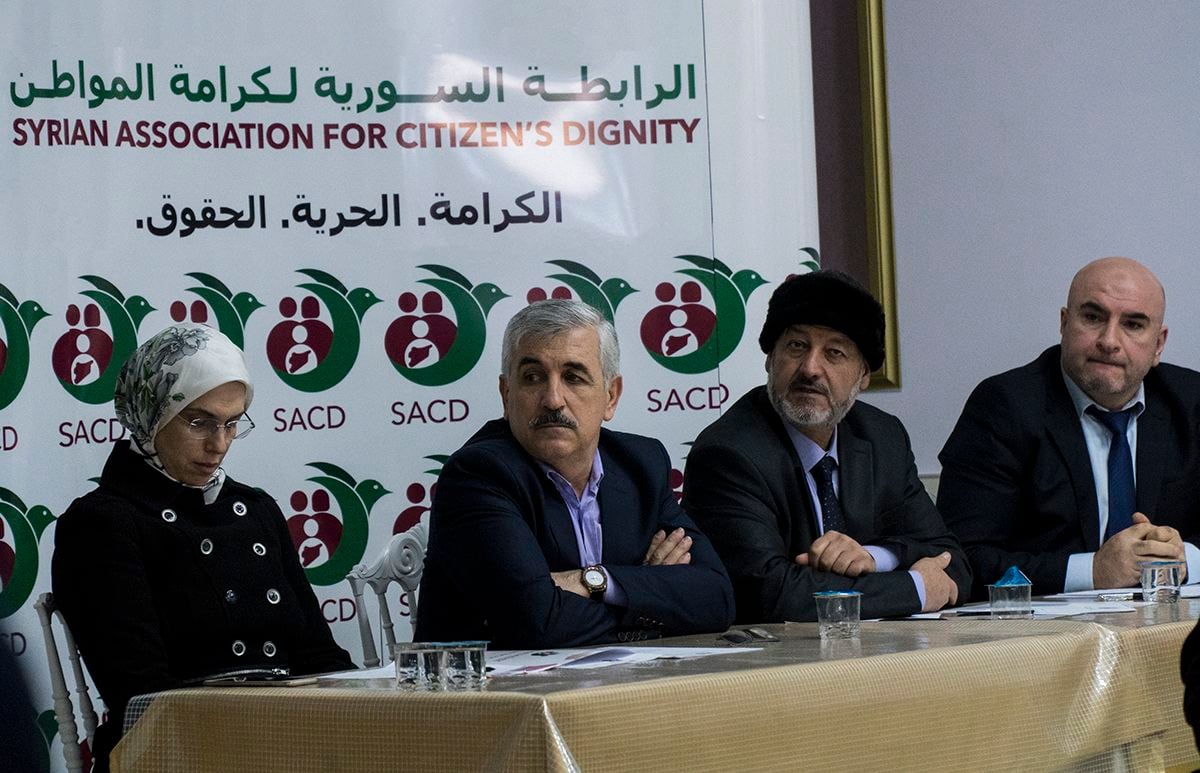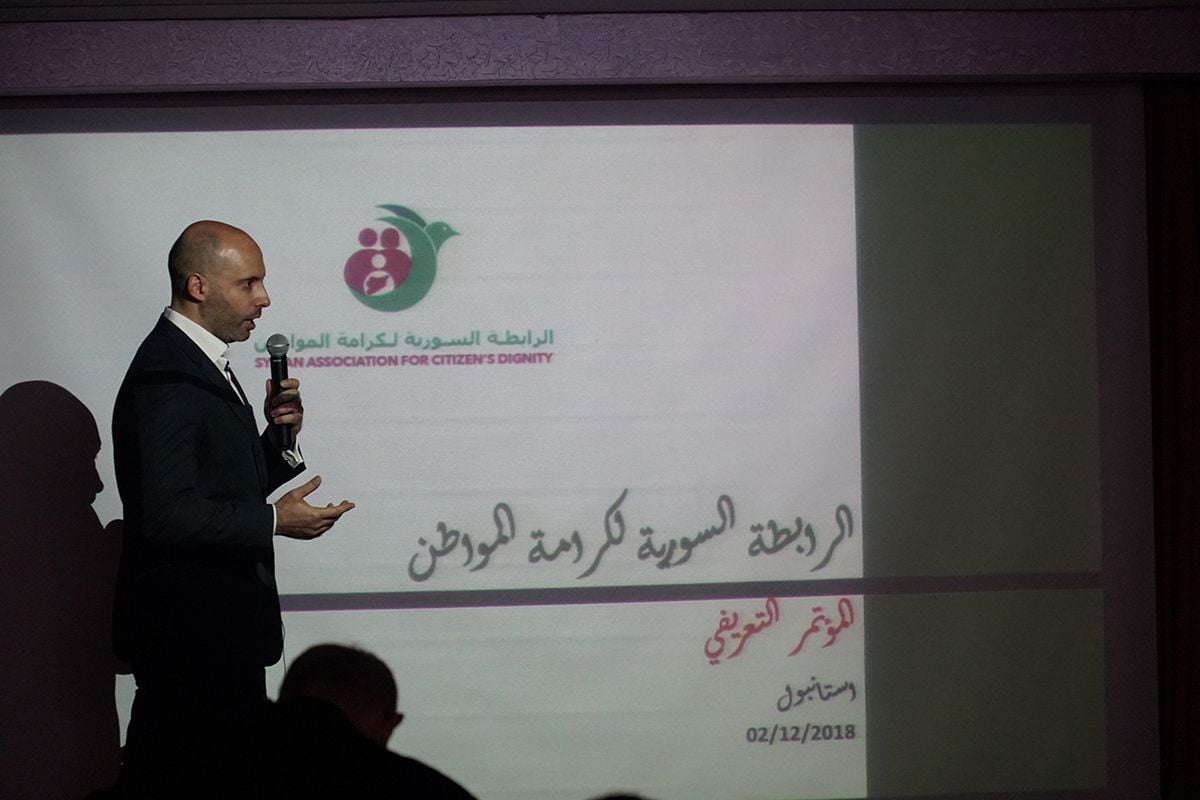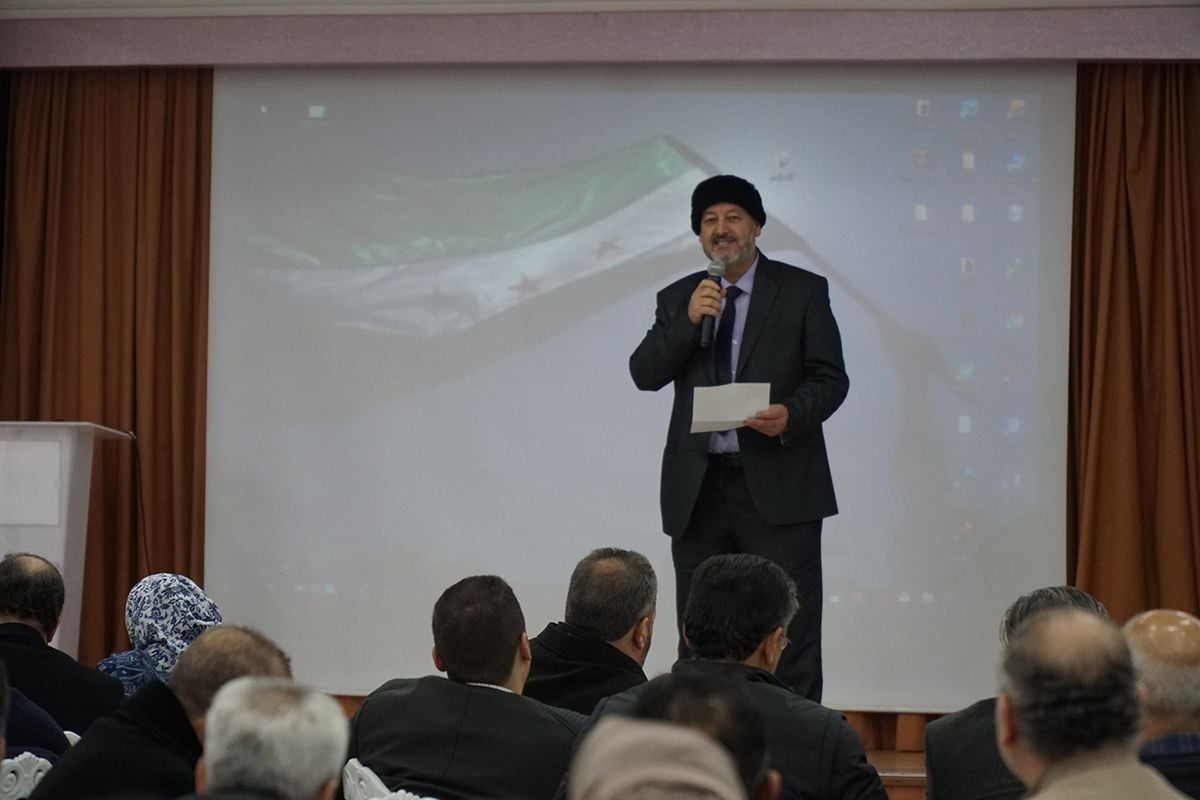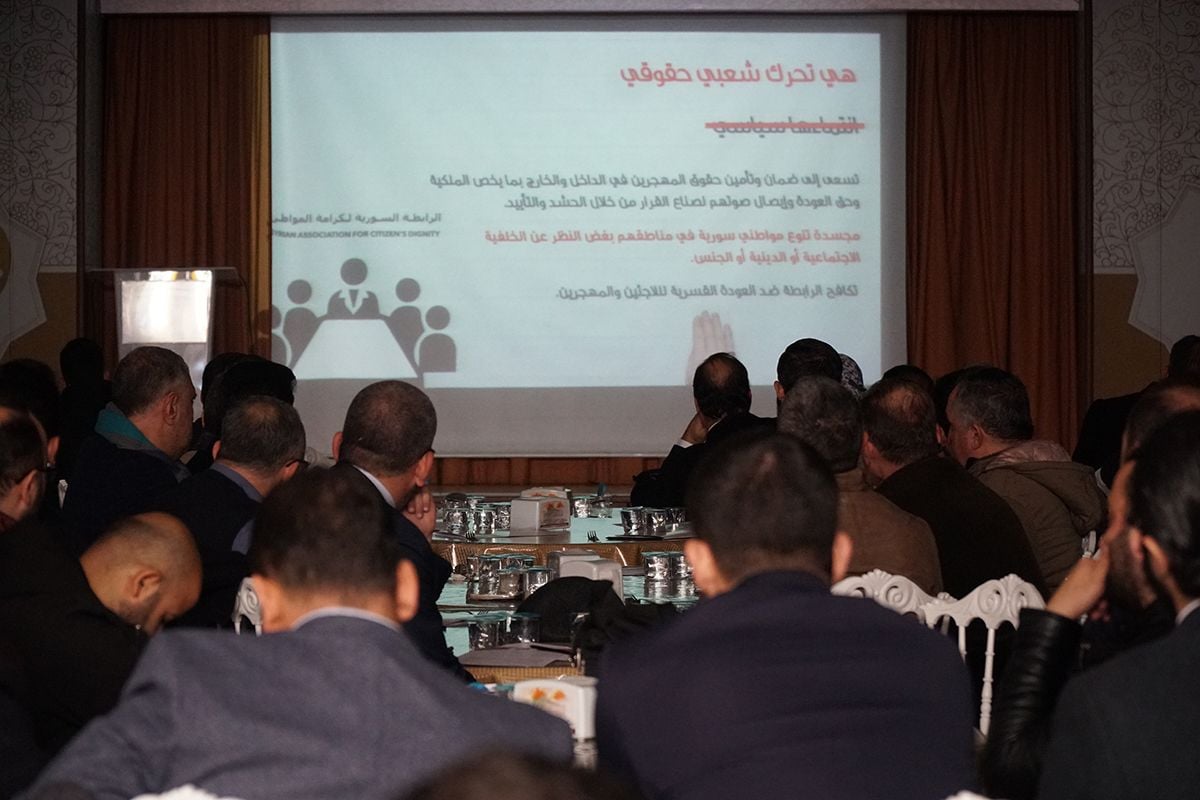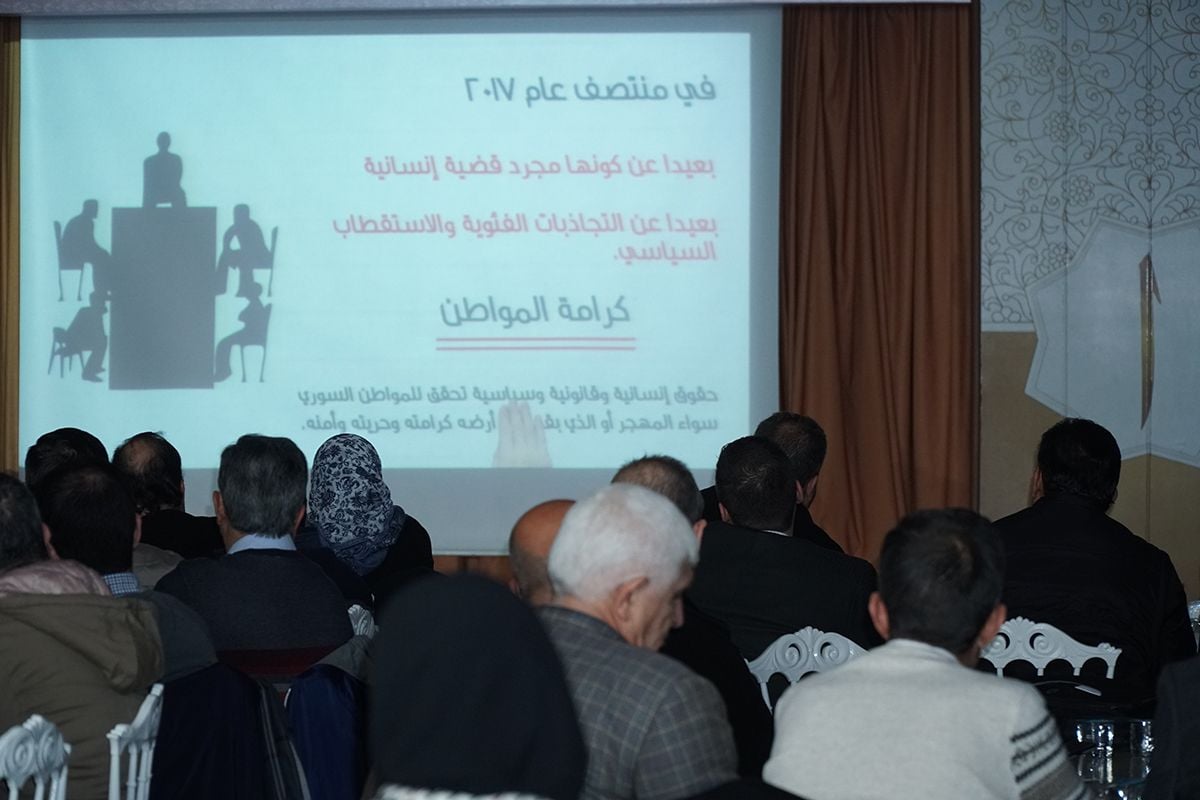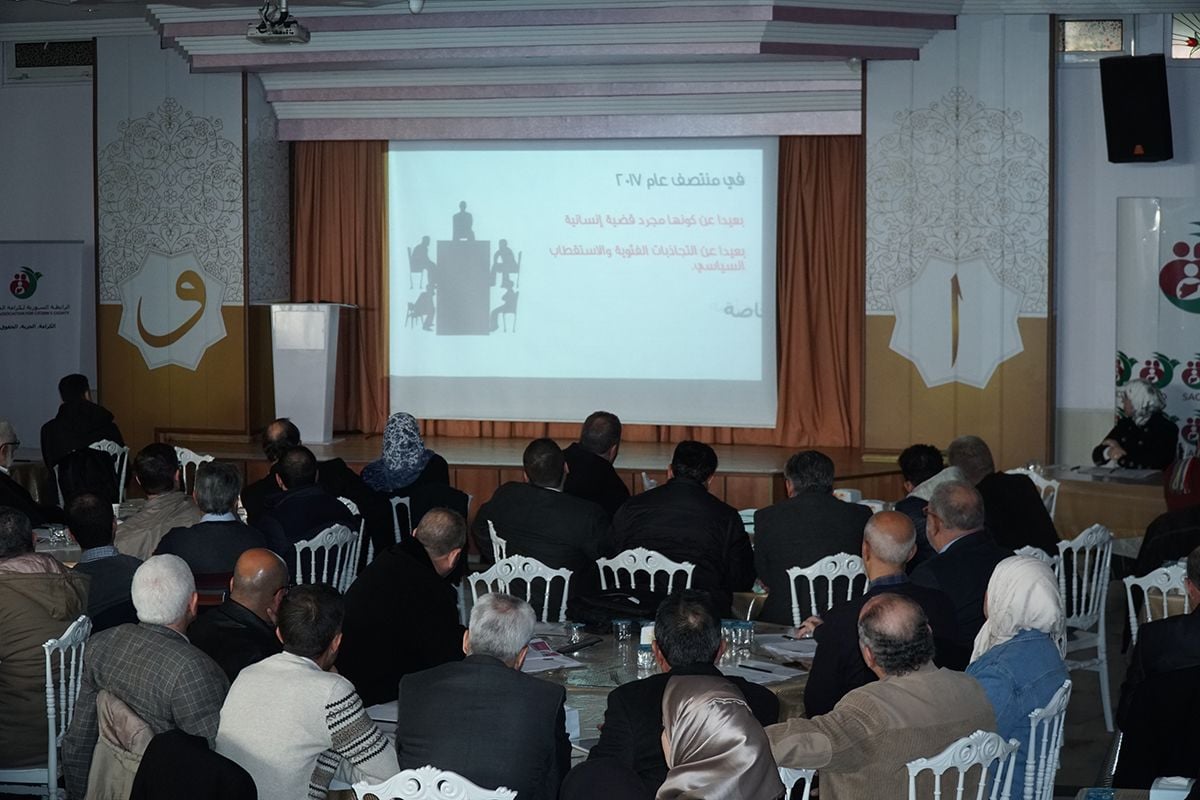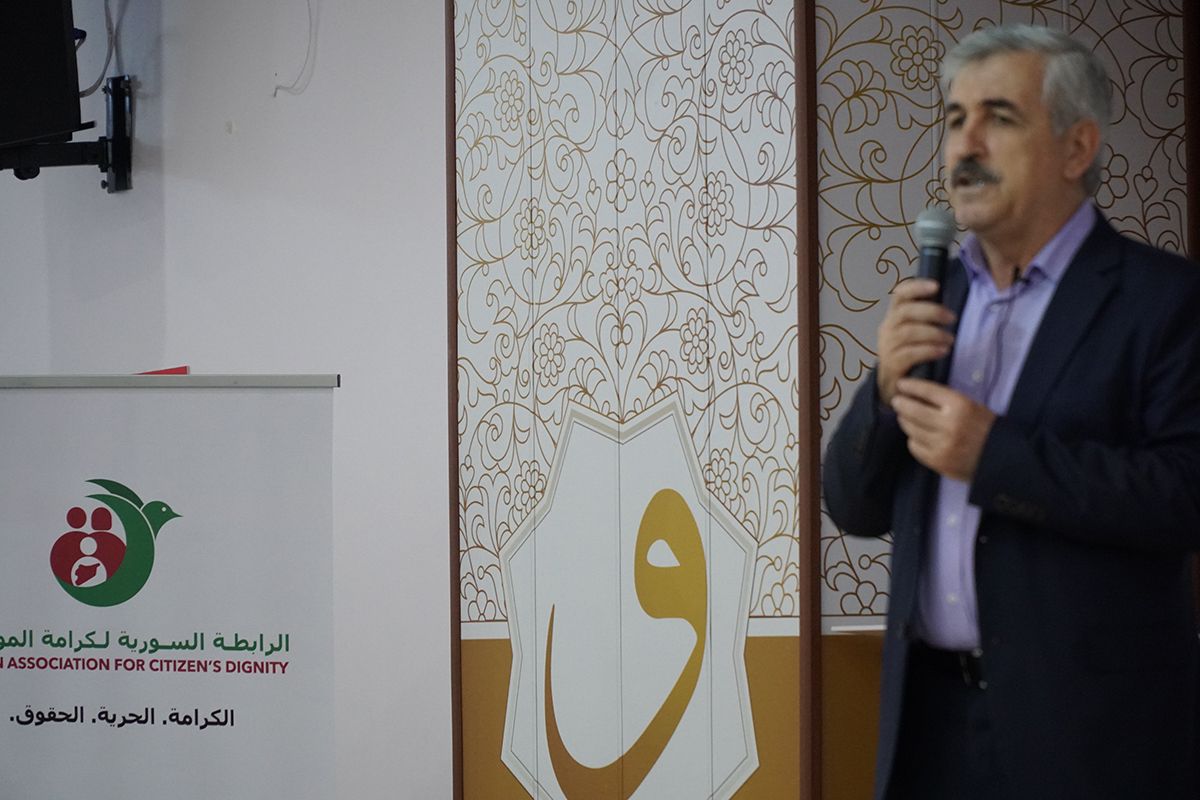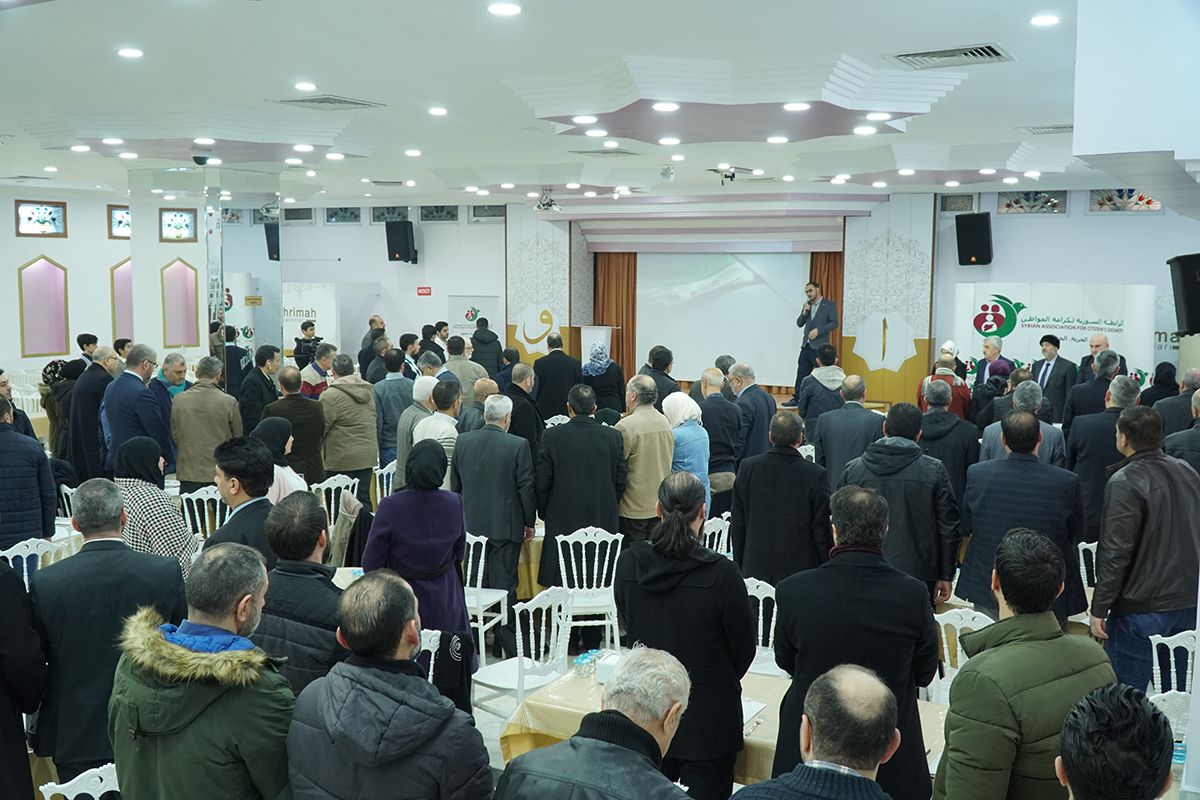Who we are
The Syrian Association for Citizens’ Dignity (SACD) is a civil-rights grassroot popular movement established by citizens from different regions of Syria to serve the people of Syria. The Association has no political affiliation. It works to promote, protect and secure the rights of Syrian refugees and internally displaced persons (IDPs) wherever they are.
The Association strives to present the vision, concerns and demands of the refugees and IDPs, and make sure that their voice is heard through advocacy, mobilization of necessary support, and influencing key international and regional policy and decision-makers.
The Association embodies the diversity of the citizens of Syria, regardless of their social, religious or gender background. The Association is fighting to ensure the right of a safe, voluntary and dignified return of all Syrian refugees and IDPs, and the effective implementation of a safe environment according to the definition of the Syrian displaced people themselves.
We are against any forced or premature return of refugees and IDPs. The Association believes that a popular movement for a dignified return, based on the recognition of the rights of refugees and IDPs as Syrian citizens, is central to any future solution in Syria.
The SACD is not a civil society organization, nor a Non-Governmental Organization (NGO), nor a political party: it is a social movement.
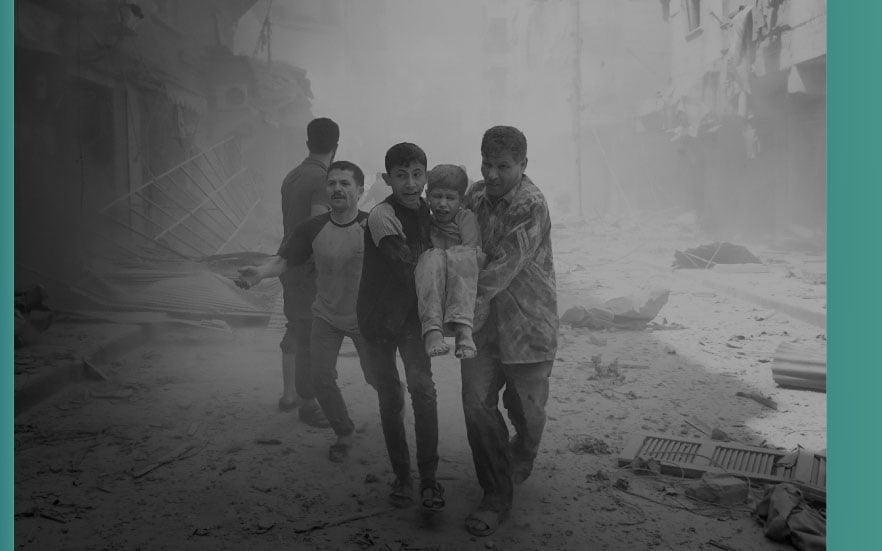
Establishment
Establishment
The association was formed by the initiative of a group of displaced people from different provinces from Syria who currently reside in countries such as Turkey, Lebanon, Jordan, Saudi, and areas in Syria outside the control of the Syrian regmie. Their initial objective was to address the absence of a legitimate and effective voice of displaced Syrians in any of the key decision-making forums, while they were facing constant threats and expropriation and encroachment of their properties, and their future was being decided in their absence.
In late 2017, several meetings were held to discuss:
- How to create a truly legitimate voice for the displaced people to decide their fate?
- What is the best model to organize a movement of displaced Syrians so that it can be heard and influence decision and policy makers?
- How to reach various areas where the displaced people from Syria are located inside and outside Syria and mobilize them into a movement that will genuinely fight for their rights?
After several meetings, the initial group expanded into consultations with a broader spectrum of influential community leaders. The initial ideas matured and developed into a vision of how the refugees/IDPs should be the constituency that will define a clear set of conditions for a safe, voluntary and dignified return, and how these conditions should form the cornerstone of any future political solution.
A “pilot project” was launched to test the implementation of the vision, starting from the Homs Province, where a series of consultations and outreach activities led to the formation of an “Assembly”, which in turn appointed a group of volunteering “trustees” as a form of collective leadership. The Trustees are people with impeccable reputations and remarkable biographies who are living among the displaced. They were entrusted with leading the movement, communicating with the people, building the movement’s legitimacy, and transmitting the message that the displaced Syrians must be represented in discussions about the conditions of their return and the human rights violations they face.
The preliminary efforts to form the Association were supported by the European Institute of Peace (EIP), represented by international activists convinced that the voice of the Syrian displaced people and refugees should be at the heart of any real political solution. Once the “model’ was implemented in Homs Province was beginning to give clear indication of success, the Association launched the same model/approach with the same vision and narrative in other provinces, including Damascus, Damascus Rural Area, Aleppo Deir Ezzor and most recently Hama over a period of a year and a half.
The official launch event for the association was on 2nd of December 2018. The movement has been growing rapidly since then, and more provinces are joining, and more influential displaced figures and citizens are joining the cause.
Structure
Structure
The structure of the Association is a light, agile and organic one oriented towards building legitimacy, mobilizing displaced communities, and perform effective advocacy. While the structure helps to push for a unified vision and narrative for the entire Association, it does recognize the particularities of each region and province in Syria, and provides space and mechanisms for the personality and heritage of each part of Syria to shine and to contribute towards building an authentic bottom-top legitimacy to support a national goal.
The main building blocks of the Association:
Local Assembly: a congregation of some of the most influential social figures in the province that meet the Association individual standards:
- Clear track-record of adherence to civil-rights advocacy values
- Impeccable reputation in their communities
- Free of any accusation or perception of corruption
- Influential in their communities
- Distinction in their professional fields.
The “Local Assembly” is the basic constituency within the association builds legitimacy, spreads the vision and narrative, and it is an open forum for discussion and decision influencing the course of action of the Association.
Local Trustees: The are members of the “Local Assembly” that are elected by their peers to devise strategies and lead the efforts and actives to implement such strategies, and to represent the Association where needed, always in consultation with the “Local Assembly” members. Trustees are volunteers.
Board of General Trustees: The “Board” is composed by a defined number of “Local Trustees” from each province (currently 2 from each province). They are elected by their local peers. The “Board” is responsible for devising the overall strategy of the association and monitoring its execution. The “Board” is also responsible for the decision-making process in the Association in consultation with “Local Assemblies”. Members of the “Board” are entrusted to officially represent the Association.
Program Management Team: The professional delivery team within the Association. It includes the following units and tracks:
- Communications Unit
- Legal Unit
- Data Collection & Analysis Unit
- Partnership Program Track
- Youth Track
Regional & International Advocacy Teams: Specialized advocacy teams composed by members of the Association in the hosting countries. With the support of the “Program Management Team” and the rest of the Associations these teams execute the advocacy strategy individually tailored for each country and international organizations.
